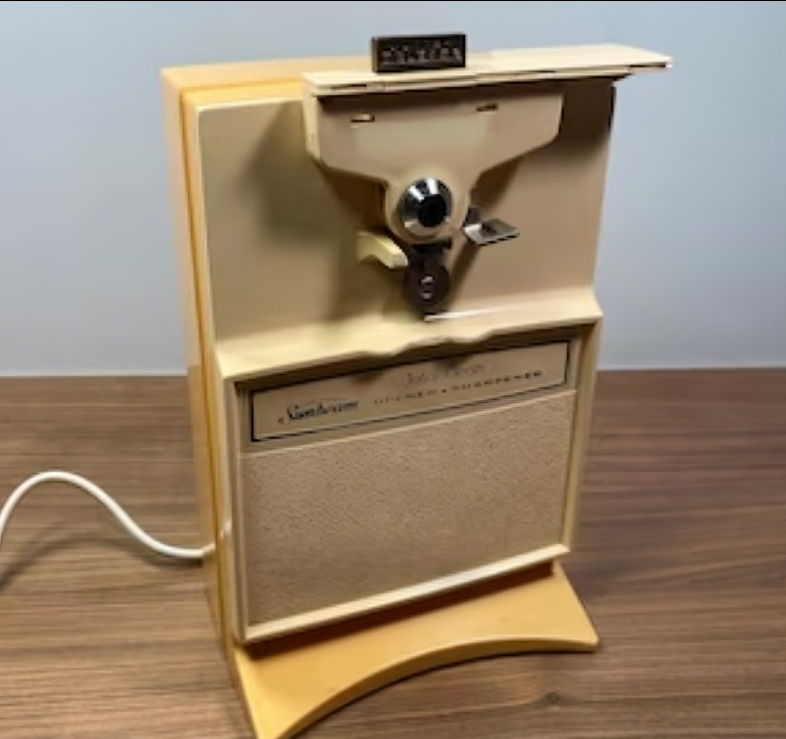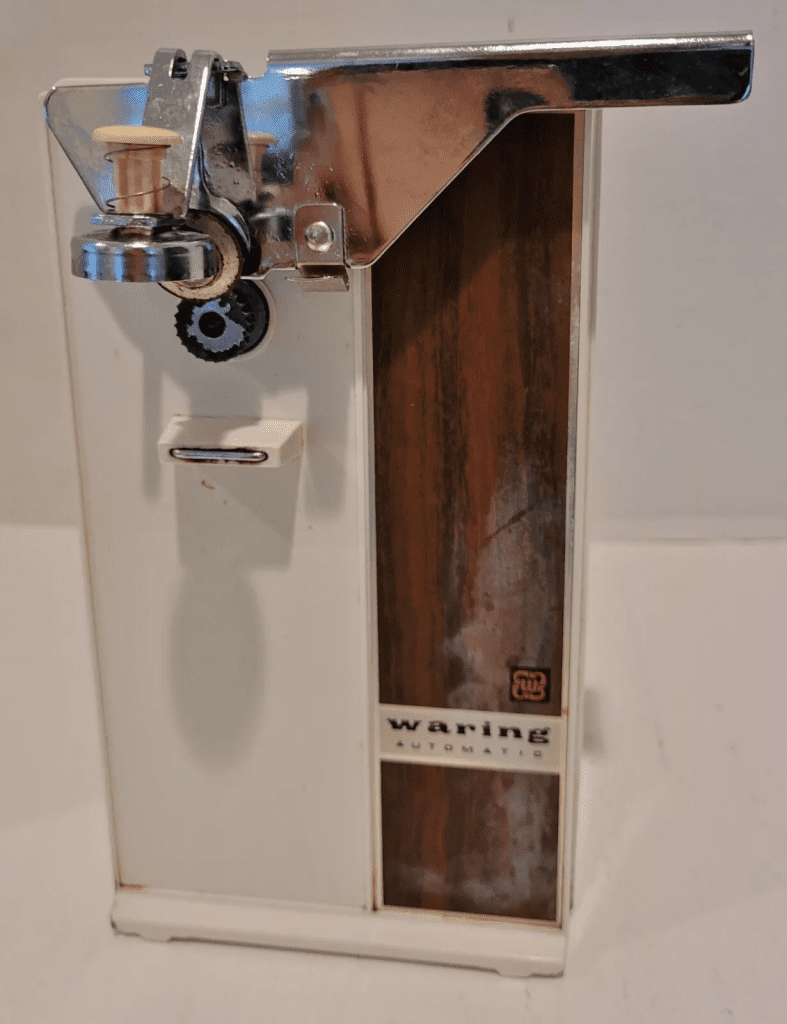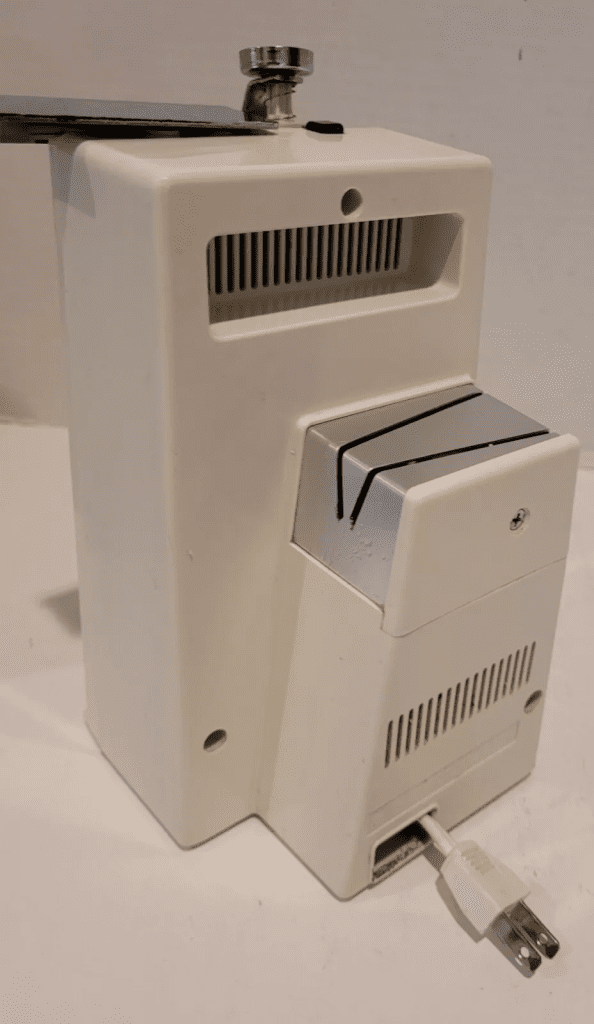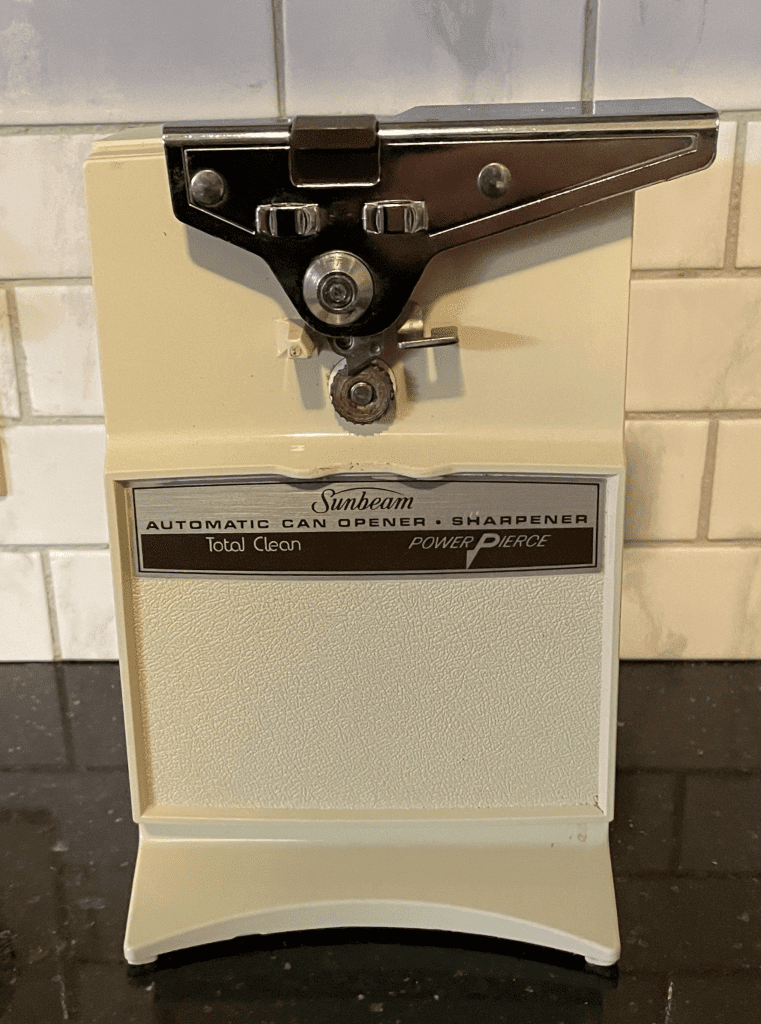Can openers, an essential tool in any kitchen, have undergone remarkable transformations since their inception. While canned food preservation dates back to the late 18th century, the invention of the can opener didn’t follow until decades later. Today, we take a look back at the history of the can opener, exploring its evolution from simple, knife-like designs to the electric models we use today.
Early Days of Canning and the First Can Opener Designs

The concept of food preservation in tin cans emerged as early as 1772 in the Netherlands, but these cans didn’t come with an easy way to open them. Early can openers were essentially variations of knives, as canning was still considered a new technology, and few people owned tools specifically for opening tins.
It wasn’t until 1855 in England and 1858 in the United States that the first can opener patents were filed. These early versions were basic and often cumbersome, resembling a simple knife blade or chisel. Users would puncture the can and then saw their way around the lid—a method that required considerable effort and wasn’t particularly safe.
The Invention of the Rotating Cutting Wheel in 1870
The first major innovation in can opener design came in 1870 with the introduction of the rotating cutting wheel. This new device featured a sharp wheel that rotated around the rim of the can, allowing users to slice through the metal lid. While this was a significant improvement over knife-like openers, it was still difficult for many consumers to use due to the manual effort required to keep the wheel on track.
Though it was a step in the right direction, this design was not widely adopted until later innovations made it more user-friendly.
A Revolution in Can Openers: The 1925 Serrated Wheel Design
In 1925, the can opener as we know it today finally took shape with the addition of a second, serrated wheel. This extra wheel served to stabilize the cutting mechanism, helping to hold the sharp wheel in place along the can’s rim. With this improvement, opening a can became a smoother, more accessible process, and this version quickly gained popularity among households across the globe.
This simple, yet highly effective design proved to be enduring. Many manual can openers used in kitchens today are based on the 1925 model, showcasing its lasting impact on kitchen tool design.
Military-Grade Can Openers: The P-38 and P-51

During World War II, military needs sparked further innovation in can opener technology. Two versions of compact can openers, the P-38 and P-51, were developed by the U.S. military. These designs were made to be robust, compact, and easily carried by soldiers. Each had a hinged, pull-cutting blade attached to a corrugated handle with a pivot, allowing soldiers to open cans quickly and efficiently, even in challenging conditions.
Both the P-38 and P-51 can openers became highly valued by soldiers for their practicality, and these military-grade openers are still appreciated today by campers, hikers, and survival enthusiasts.
The Rise of the Electric Can Opener in the 1950s
By the late 1950s, the can opener experienced yet another evolution with the introduction of electric models. As household appliances were becoming more advanced and widely adopted, electric can openers quickly gained popularity for their convenience. With just the push of a button, users could open a can effortlessly, making the task accessible even for individuals with limited hand strength.
Electric can openers continue to be a staple in many kitchens, and their designs have improved over the years with added features, such as automatic shut-off and safety-enhanced blades.
Modern Innovations: The Side-Cutting Can Opener

In recent years, the can opener has seen further innovations with the side-cutting model. This design opens cans by cutting around the side of the lid rather than through the top, creating a safer and smoother edge that minimizes the risk of cuts. Side-cutting can openers are not only safer but also eliminate the sharp, jagged edges left by traditional openers.
The modern side-cutting model has gained a following for its functionality and safety features, especially among families with young children and seniors.
Types of Can Openers and Their Uses Today
Today, can openers come in various styles, each suited to different needs. Here are some of the most common types you’ll find:
1. Manual Can Openers
- Handheld, Rotary-Style: Based on the 1925 design, these manual openers require users to clamp onto the can and turn a handle. They’re compact, affordable, and easy to store.
- Military-Style: The P-38 and P-51 openers remain popular for outdoor activities, given their small size and durability.
2. Electric Can Openers
- These models plug into an outlet and typically feature an automatic operation with just the press of a button. Many electric models include magnetic lid holders and built-in knife sharpeners.
3. Side-Cutting Can Openers
- A recent design, the side-cutting can opener, is valued for its safety, as it leaves a smooth edge. These openers are available in both manual and electric versions.
4. Pull-Tab Can Openers
- With the introduction of pull-tab cans, some can openers are designed specifically to help users lift the tab and peel back the lid safely, offering added convenience for people with arthritis or limited hand strength.
Why the Can Opener Remains a Kitchen Staple

The enduring presence of can openers in kitchens worldwide is a testament to their importance. Canned goods provide a convenient and cost-effective way to store food, and can openers make these products easily accessible. Though modern packaging designs may reduce the need for can openers, traditional cans are still widely used for their durability and long shelf life.
The evolution of the can opener reflects broader trends in kitchen gadgetry, blending functionality with safety and ease of use. Whether you’re using a vintage manual model or a high-tech electric opener, this humble tool remains indispensable in our daily lives.
Conclusion: A Tool That Stands the Test of Time
From its early days as a cumbersome tool to the refined designs available today, the can opener has undergone significant changes. Each new version has aimed to make the task of opening cans simpler, safer, and more efficient. As technology continues to evolve, so too will the can opener, adapting to meet our needs while maintaining its status as a kitchen essential.
The history of the can opener serves as a reminder of how innovation can transform even the most everyday items. So, the next time you reach for your can opener, take a moment to appreciate the journey of this reliable tool—and the many meals it’s made possible over the years.



